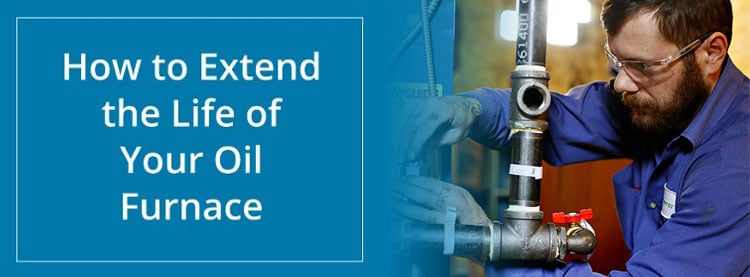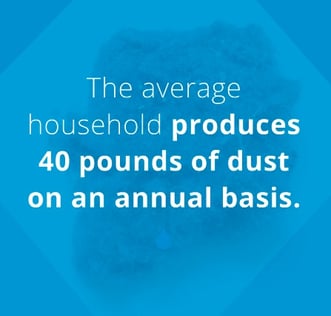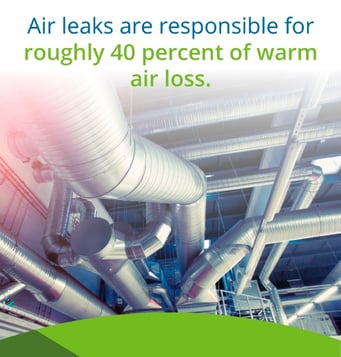
For a heating furnace to operate at full capacity, it must be balanced in its setting, which requires proper installation. To extend furnace life during the time you occupy a residential property, you must deal with any problems promptly and clean vents and ducts as needed.
So how long does an oil furnace last? That really all depends on the kinds of steps you take to prolong the furnace’s lifespan. With the following eight steps, you can extend furnace life expectancy and keep your energy costs low in the process.
Have Your Furnace Serviced Before Each Winter
To keep your furnace in tip-top shape for as long as possible, it is crucial to have it serviced each fall, in advance of the peak-usage months of winter. Even when it comes to the top furnace models on the market, manufacturers recommend you have the unit serviced annually. With annual maintenance, you can extend furnace life expectancy and keep your electrical bills to a minimum with each passing year.
Various things can go wrong with an aging, overworked furnace. For starters, the wear and tear a unit endures each winter can take its toll, especially as dirt accumulates on the inside. As the machine wears down, it is forced to work harder and harder just to perform its basic functions. To get adequate heat from a worn furnace, you have to crank the heat higher and higher, which can quickly send your heating costs through the roof.
With annual maintenance on your heating furnace, you can reap the following benefits:
- A clean furnace system — A furnace works a whole lot better when the components are clean and the internal parts are freshly tuned. A service specialist can test the furnace to see if it leaks carbon monoxide or displays other problem symptoms.
- Early detection of problem issues — If something is wrong with your furnace, your chances of rectifying the issue are best if you catch the problem before it wears down the unit as a whole. With annual maintenance, you can stay on top of these things.
- Replacement or worn parts — If a part within your furnace needs to be changed out, the perfect time to get the job done is during your annual routine furnace inspection.
Each year your furnace undergoes maintenance, certain issues could come to light that would otherwise become costly if you power the unit on without an inspection. For instance, the service person might discover faulty wiring that could cause motor failure. The cost to have this issue fixed early can equal huge savings when you consider the financial consequences of not taking action.
Replace the Furnace Filter
To ensure your heater is efficient and the air throughout your house is clean during the fall and winter months, check the furnace filter on a monthly basis and replace if necessary.

According to a study by the EPA, indoor air can be five times as toxic as the ambient air outside. With a clean air filter, your furnace can help your household beat the odds. As the furnace operates, part of its job is to trap airborne impurities and keep the warm air you breathe clean. As such, the furnace filter is the most important component when it comes to the sanitation of the air within your house.
However, as the weeks go by, the filter itself can become clogged with the dirt and dust it holds from the air. As this happens, the furnace must work harder and harder to perform its basic functions. With the increased strain on the motor, the furnace can end up burning more energy, which will ultimately show on your monthly energy bills.
The worst consequence of a dirty air filter is the effects it can have on your indoor sanitation. After all, the furnace will still blow air, despite the accumulated dirt within the filter. Gradually, particles of this dirt can slip out and mix into your air, and thus defeat the filtration purpose. In situations like these, you get the worst of both worlds — dirty air and a straining furnace.
A monthly inspection of your air filter can help you extend the furnace’s lifespan and protect the health of everyone in your household. A clean filter will trap various impurities from the air — such as dust, dirt, allergens and pet dander — and allow your family to breathe clean air throughout the months when your windows are shut.
Clean the Air Ducts Every Two Years
The air filter is not the only part of the furnace that can be hampered by the buildup of dirt and airborne particulates. Before the air even passes through the filter, it travels through the air ducts, which can also become dirty, albeit at a slower pace. Over a period of two to three years, dirt and dust can deposit along the lining of the air ducts and cause problems for the unit itself, as well as for the quality of air that passes through.
 As the air ducts line with dirt, it leaves the air with a thinner channel through which to pass. This, in turn, forces the motor to spin harder just to keep up the standard number of rotations per minute. As a result, your furnace endures increased strain, and the unit burns more and more energy just to function properly. Much like when the filter gets clogged, a dirty air duct can send your monthly energy bills through the roof.
As the air ducts line with dirt, it leaves the air with a thinner channel through which to pass. This, in turn, forces the motor to spin harder just to keep up the standard number of rotations per minute. As a result, your furnace endures increased strain, and the unit burns more and more energy just to function properly. Much like when the filter gets clogged, a dirty air duct can send your monthly energy bills through the roof.
Worst of all are the ill effects dirty air ducts can have on the sanitation of your house. Even if the filter is new and clean, your furnace can still slip impurities into the air if the ducts are lined with dirt. When you consider the average household produces 40 pounds of dust on an annual basis, your furnace is liable to suck in a hefty load each winter. Therefore, the air ducts should be cleaned every two to three years, preferably during every other maintenance inspection.
With clean air ducts in your furnace, your house becomes more inhabitable because the air is more stripped of the impurities that can otherwise lead to allergies, respiratory problems and autoimmune disorders.
Seal Furnace Air Leaks
 One of the most damaging and wasteful problems that can hinder a heating furnace is an air leak. When an air leak forms along the furnace line, it drains the system of its ability to produce heat. Regardless of where the leak occurs, the furnace loses vast amounts of air before it completes the process of heat production. This forces the furnace to work harder just to keep up with heat production, and the results are typically lackluster.
One of the most damaging and wasteful problems that can hinder a heating furnace is an air leak. When an air leak forms along the furnace line, it drains the system of its ability to produce heat. Regardless of where the leak occurs, the furnace loses vast amounts of air before it completes the process of heat production. This forces the furnace to work harder just to keep up with heat production, and the results are typically lackluster.
With home furnaces, air leaks are responsible for roughly 40 percent of warm air loss. If your furnace leaks air, your energy costs are bound to rise as the motor strains harder just to do its job. Unless the problem is fixed, it can reduce the lifespan of your furnace and lead to a more costly set of repairs as parts begin to fail.
To ensure your furnace maximizes the incoming air, have your service person check the heating system for air leaks during each annual inspection. Likewise, if at any time you suspect that your furnace system has an air leak, have the furnace inspected immediately. The sooner you have these leaks sealed, the better your furnace will perform.
Sealed air leaks ensure greater furnace efficiency, which translates to a warmer, more comfortable house and money saved on energy repair costs over the long run.
Adjust the Thermostat
Another way to extend furnace life is by making sensible adjustments to the thermostat, which is key to the conservation of your heating system. Most people spend about 10 hours per day away from home. Consequently, a lot of energy goes to waste in homes where the furnace runs at normal capacity throughout the day. With the right kind of thermostat, you can save on heating costs during the hours when your house is empty.
Of course, you need the right kind of thermostat to get the maximum benefit of this feature. If your thermostat is old or outdated, consider a new thermostat with programmable capabilities. With this feature, you can program the furnace to run at a reduced level during most of the day, but rise to a warmer level one hour before you get back home. This way, your home will be warm and comfy by the time you arrive, yet you will save on daytime heating costs.
With an optimal thermostat, the savings add up over time. By using the furnace less throughout most days of the week, the unit will endure less wear and tear each winter, thereby extending its service life. Furthermore, the day-to-day energy savings can be impressive. If you adjust the thermostat down by just a couple degrees, you could shave a significant amount from your monthly energy bills.
Reverse the Ceiling Fan During Winter
Did you know your ceiling fan can rotate both ways — clockwise to send the air blowing down, and counterclockwise to blow the air upward? During the spring and summer months, you want the air to blow down because the downward motion spreads coolness. By contrast, the counterclockwise, upward rotation can help the warm air circulate better throughout your house during winter months.
As the furnace fills your house with warmth, the upward-moving ceiling fan will help distribute that heat to the upper parts of your rooms. This fights off the coldness more effectively by helping the house insulate warmth from top to bottom, rather than just at ground level. As a result, rooms heat up fuller and faster, which allows you to go easier on your furnace.

With the use of your ceiling fan, you can extend furnace life because the heating unit won't be required to work as hard to bring your house to sufficient levels of warmth. As such, the mechanisms of your furnace undergo less strain, and the unit consumes less energy each month. In fact, the use of an upward-blowing ceiling fan — in combination with the furnace — can help you slash your heating bills by as much as 15 percent in the wintertime.
Call for Furnace Repairs Whenever Problems Arise
Perhaps the biggest mistake a homeowner can make in regards to a heating furnace is to procrastinate on service calls. For example, a furnace could start making a strange sound that likely indicates a performance issue, yet the owner will dismiss the noise and carry on as if nothing is wrong with the unit. Fact is, a lot of homeowners end up paying heavily in the long run for initially ignoring furnace problems.
The moment you sense something is wrong with your furnace, call your service person to have the unit inspected. Regardless of whether the furnace recently underwent its annual inspection, a mechanical problem is a mechanical problem, and such issues become costlier the longer you allow them to linger. If you wait too long, the problem could put a strain on your furnace that will ultimately affect various other components.
Even if your machine manages to operate with a minor, noticeable defect for several seasons, the problem could still be costly. After all, when the furnace is incapable of performing at full capacity, it is forced to work harder just to do its job, and this consumes more energy. If you procrastinate on service calls and allow a problem to drag on indefinitely, you could end up paying higher monthly energy bills.
The average furnace will last between 13 and 15 years. However, if you remain proactive on furnace maintenance and report problem issues the moment they arise, you can extend the life of your furnace to 20 years or more.
Use Quality Furnace Fuel and Additives
A heating furnace is like an automobile: Both run best on quality fuel. Lower-grade fuels force a furnace to work harder to operate at full capacity. As low-grade fluids age inside a furnace, they form impurities that can have a detrimental effect on the internal components. The longer this continues, your furnace is liable to emit carbon monoxide into your living quarters.
With quality fuel in your home furnace, you can raise the unit's energy efficiency and enjoy cleaner air and a longer furnace lifespan.
Purchase Heating Oil Online From Smart Touch Energy
You can boost furnace life expectancy by using proper fluids in your heating unit. As winters become colder than they've been in the past, the power and longevity of your furnace could prove more critical than ever for the comfort of your household. In homes across the Northeast, people rely on Smart Touch Energy for heating oil.
At Smart Touch Energy, we offer high-quality heating oil right here on our website for online purchase. To learn about our products, prices and services, visit our services page.


